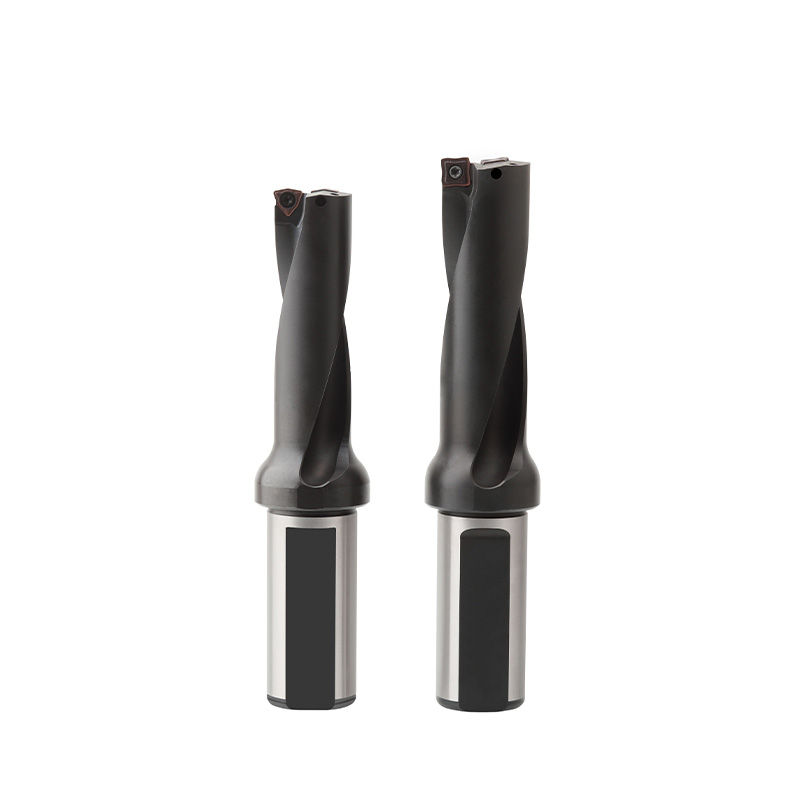What is the difference between U drill and normal drill?
2024-06-03
Typically, a normal drill uses a solid drill bit that may require regrinding or replacement when worn.
U drill utilizes replaceable blades, including peripheral blades and a center blade. This allows for faster and easier blade replacement compared to regrinding a solid drill bit.
Normal Drill: Normal drills have a certain level of rigidity, but their feed rates are generally lower due to their design and material composition.
U drills are known for their better rigidity, which allows for higher feed rates. This improves efficiency and productivity.
Normal drills are available in various sizes, but their processing diameter is typically limited by the drill bit's design and material.
U drills can achieve much larger processing diameters compared to normal drills. Their maximum processing diameter can reach up to D50~60mm, making them suitable for larger hole-drilling operations.
When drilling different materials, normal drills may require the use of different drill bits or adjustments to the drilling parameters.
U drills offer more flexibility in dealing with different materials. When encountering different materials, it is generally only necessary to replace the same type of blades with different grades, without the need for complex adjustments or tool changes.
With the need to regrind or replace drill bits, normal drills can have higher maintenance costs over time.
The use of replaceable blades in U drills allows for cost savings by reducing the need for regrinding and extending tool life. Additionally, the consistency of replaceable blades helps to maintain tighter control over part dimensions.



